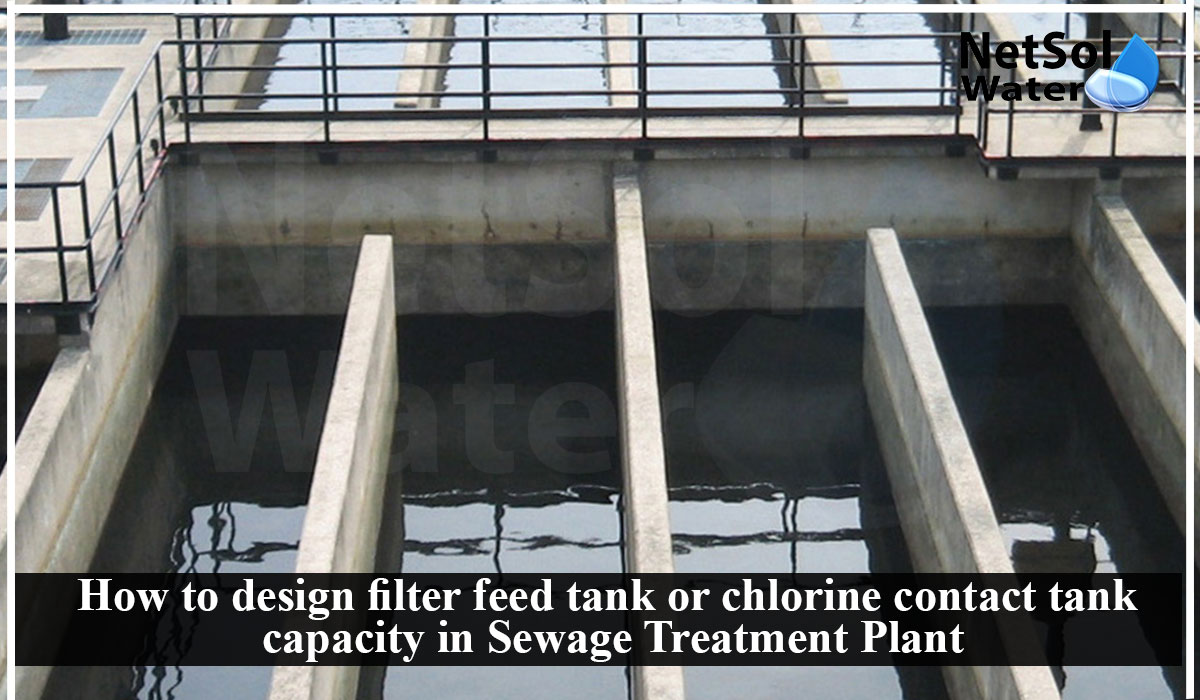How to design filter feed or Chlorine contact tank capacity in STP Plant?
Sewage treatment plants are essential to ensure that the water that is released back into the environment is safe for all living beings. In these plants, filter feed tanks and chlorine dosing tanks are used to remove impurities and disinfect the water. The design of these tanks is critical to the efficiency of the plant, and retention time is a crucial factor in determining the capacity of these tanks.
In this blog, we will discuss how to design a filter feed tank and chlorine contact tank with retention time calculation formulas.
Filter Feed Tank:
A filter feed tank is a tank that feeds wastewater into a filter for further treatment. The retention time of the tank is the time required for the water to pass through the filter. The capacity of the tank is determined by the flow rate of the wastewater and the desired retention time.
The formula for calculating the capacity of a filter feed tank is as follows:
Tank Capacity = Flow Rate (m3/hr) x Retention Time (hrs)
For example, suppose the flow rate of wastewater is 100 m3/hr, and the desired retention time is 3 hours. In that case, the tank capacity would be:
Tank Capacity = 100 m3/hr x 3 hrs = 300 m3
Therefore, the filter feed tank's capacity should be 300 m3 to achieve a retention time of 3 hours.
Chlorine Dosing Tank:
Chlorine dosing tanks are used to disinfect the wastewater by adding chlorine to it. The retention time of the tank is the time required for the chlorine to react with the wastewater and disinfect it. The capacity of the tank is determined by the flow rate of the wastewater, the desired retention time, and the chlorine dosage rate. The formula for calculating the capacity of a chlorine dosing tank is as follows:
Tank Capacity = (Chlorine Dosage Rate (mg/l) x Flow Rate (m3/hr) x Retention Time (hrs)) / Chlorine Strength (mg/l)
For example, suppose the flow rate of wastewater is 100 m3/hr, and the desired retention time is 1 hour. The chlorine dosage rate is 5 mg/l, and the chlorine strength is 10 mg/l. In that case, the tank capacity would be:
Tank Capacity = (5 mg/l x 100 m3/hr x 1 hr) / 10 mg/l = 50 m3
Therefore, the chlorine dosing tank's capacity should be 50 m3 to achieve a retention time of 1 hour and a chlorine dosage rate of 5 mg/l with a chlorine strength of 10 mg/l.
Conclusion:
The design of filter feed tanks and chlorine dosing tanks is a critical aspect of sewage treatment plant design. The retention time of these tanks plays a crucial role in determining their capacity. The formulas for calculating the tank capacity with retention time have been provided in this blog. These formulas can be used to design the filter feed tank and chlorine dosing tank capacity in sewage treatment plants. Proper design of these tanks can help ensure the efficient treatment of wastewater and the safe release of water back into the environment.
Netsol Water is Greater Noida-based leading water & wastewater treatment plant manufacturer. We are industry's most demanding company based on client review and work quality. We are known as best sewage treatment plant manufacturer, Water Softener Plant Manufacturers and effluent treatment plant manufacturers. Apart from this 24x7 customer support is our USP. Call on +91-9650608473, or write us at enquiry@netsolwater.com for any support, inquiry or product-purchase related query.



